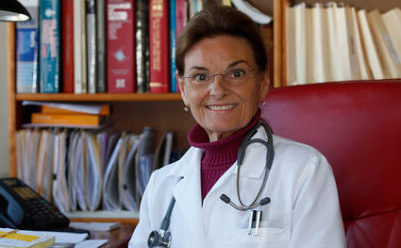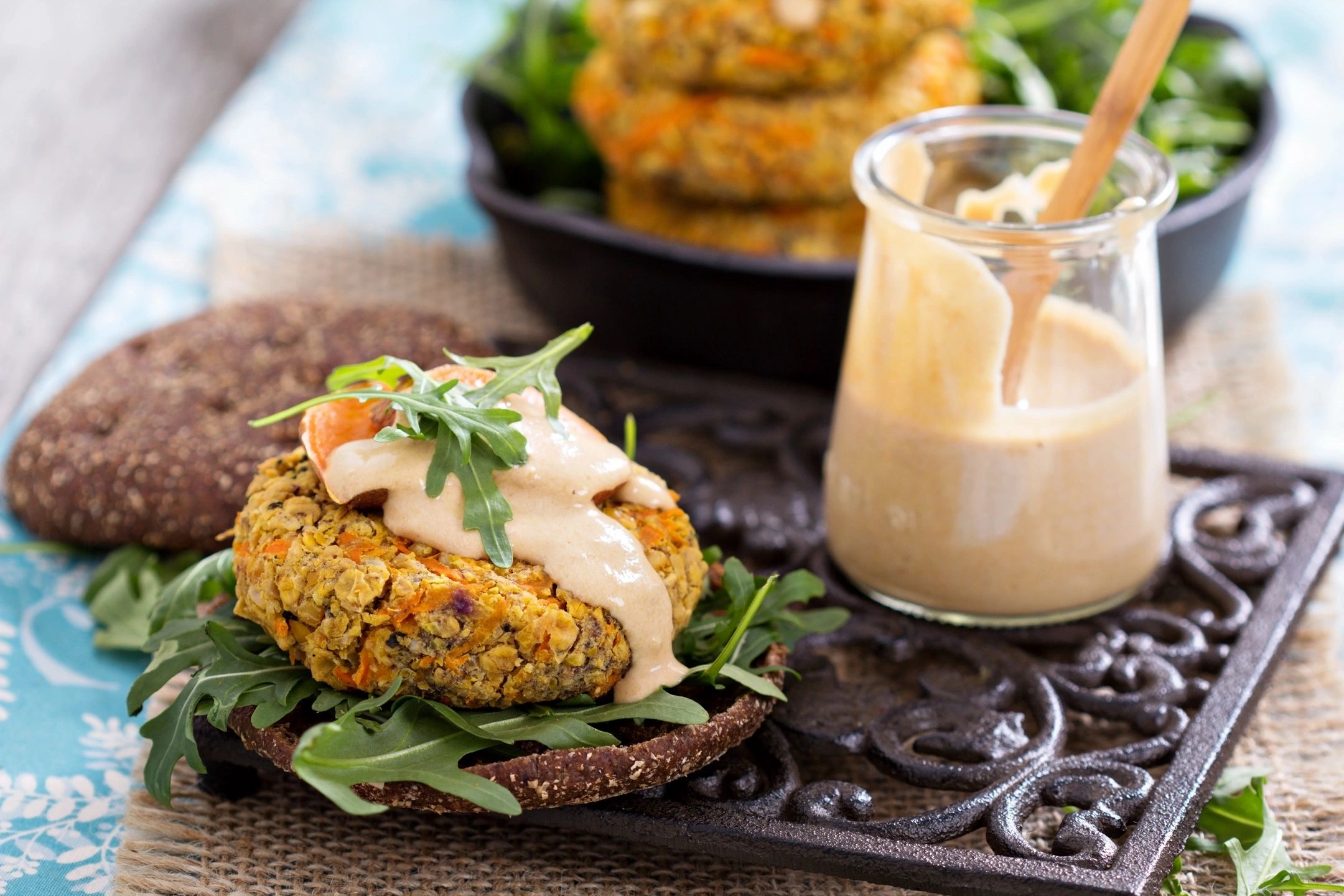Cassandra Ohlsen, m.d., is a diplomate certified in Internal Medicine. She received her medical degree from Keck School of Medicine of USC and has been in practice for over twenty years. She has also practiced in Africa and India: In 1984, she worked with Mother Teresa at her Home for Dying Destitutes and her Children’s Home in Calcutta. Dr. Ohlsen also cared for the medically underserved at a Los Angeles clinic, helping to rebuild community health after the Watts riots; in Fresno, California, where she attended to migrant farm workers; and at the Monterey County Health Department, where she took care of indigent adults and children. So basically, this woman is a Queen, a genius, an angel, and someone we’d listen to at any time. Enlightened Eating, her first book, offers advice on how to increase your good health, lose weight and live a more conscious, fulfilling life by blending plant-based eating and Buddhist psychology.

“Dr. Cassandra Ohlsen is one of those rare physicians whose goal is to help you understand that what and how you eat is foundational to your personal health, the health of others we share the Earth with, and the Earth itself. If you want more energy and vibrant health, her book, Enlightened Eating, will give you that and a lot, lot more.” John Robbins, President of the Food Revolution Network; Author of Diet For A New America and The Food Revolution
“If you are looking to improve your eating habits, Enlightened Eating is the perfect place to start. This life-changing book translates complex nutrition information into simple, practical guidance and helps you take in hand the power of good nutrition.” Neal D. Barnard, MD, FACC, Adjunct Associate Professor of Medicine, George Washington University School of Medicine

Change Your Eating, Change a Whole Lot More
“When you change your eating, it’s not just your eating that will change,” says Dr. Ohlsen
“The United States is one of the fattest and least healthy populations nations in the world”, she says. “We want the pleasures of the foods we like, and then we want a quick fix — a pill — to counteract the harm we’ve done to ourselves by eating them.”
But nutrition science is confusing and the hefty advertising budgets of the food industry can derail people. The incredible number and range of studies and science about food and diet is sometimes contradictory. People eat for countless reasons, including stress relief, to relieve fatigue, to comfort themselves, to accompany the alcohol they drink, to please others, to be included in family gatherings and social situations, to celebrate their heritage…seldom is it simply for health.
“What we eat impacts everything: from how much we weigh, to how we feel, how much we sleep, and our bodies ability to switch on disease-preventing genes and switch off disease-causing genes.
“The bottom line however is simple – The best fix is to change how you eat and switch to a plant-based, whole foods diet,” she says. “Instead of overeating high-calorie, fat-laden, prepared, processed, and unnatural foods, indulge yourself by eating nutrient-rich, calorie-sparse natural foods — vegetables fruits, beads and whole grains.”
Dr. Ohlsen offers a guide is all about navigating this path and you don’t have to be a Buddhist to receive the benefits of their principles.
“You can change your health by changing what you eat”, she says, “as well as how to change how you think and act with regard to food. You can transform your relationship with food and change from the inside out.”
Here are a few of her recommendations.
- Thinking specifically about what you want–not what you don’t want. Getting to a new way of eating requires a new way of thinking. Since solutions always begin with thought, problems have to be solved first in our mind. Begin by doing the following:
- Name what you want to change. Perhaps there was a diagnosis of a serious medical problem and the issue is at least partly a result of the way you’ve been eating. Or maybe it’s simply time to improve or preserve your health, and to do that there needs to be a change in diet. Or maybe one might want to contribute to preserving the environment and stop contributing to the abuse of animals through factory farming. Name it.
- Reflect on how you got to this place. What created this problem? Was it due to mindlessly overeating? If you have high cholesterol is it because you’re eating too much animal fat? Did you experience some kind of childhood trauma, or do you sometimes have bouts of depression? Only by knowing the reason behind the problem can you then actively change it.
- Visualize the new behavior in your mind before you practice it. Visualize yourself choosing more plant-based foods and enjoying the tastes and textures of the food. Do this in as much detail as possible. See the colors, hear the crunch or other sounds associated with eating delicious food. Feel the enjoyment and the satisfaction of eating nutritious foods, and the good feelings that come from treating your body well.
- Say positive statements aloud to yourself. This might include, “I see myself eating more healthfully each and every day. I am in the process choosing foods that are better for me and the environment. I see myself becoming healthier, thinner, and more fit. I love feeling good that I’m making positive choices, and not adding to the suffering of animals.”
- We become what we envision. Focus on the present moment and observe our thoughts and guide our minds. Do our thoughts work against our new way of eating, or do they encourage us in it? Do we tell ourselves we’re happy with our new eating, or tell ourselves we’re deprived? If the latter, we are much less likely to stick with it.
- Create the thoughts that will lead to that next action. Many of us want to change something but don’t know how. To change our eating habits (or any habits for that matter), identify the problem, look for the causes, eliminate them, and live with the solution through our plans, thoughts, actions, and daily awareness.
Once you begin to take control of your mind, it’s time to take control of your food.
How to transition to plant-based eating:
Tip: Think differently about what you already eat.
1. Consider fruits, vegetables, beans and grains as the main focus of a meal rather than side dishes. This not only helps with the transition, it also automatically increases the amount of fruits and vegetables you eat daily.
Fruit: It’s satisfying, contains no salt or fat, provides a lot of great nutrition.
What to do: Have it washed and cleaned and available at all times for snacks. Throw it in a backpack, lunch box, briefcase, desk drawer or in the car. Throw into smoothies. Make it easy to grab a piece of fruit, rather than a sugar-filled energy bar or candy bar.
Salads: Make them a more prominent part of your meal.
What to do: Throw in more veggies, make it larger, add more protein or fruit — apples, berries, and dried fruits such as raisins, cranberries, and dates. Beans, nuts, hummus, edamame and tofu are good protein additions to salads. Experiment. You’ll surprise yourself at how good and satisfying salads can be.
Sandwiches: Create a salad between two pieces of bread.
What to do: Load it up with raw vegetables–lettuce, tomato, avocado, cucumber sprouts, or whatever veggies you love. Add a dip for extra flavor.
Snacks: When you’re hungry, go for something that will nourish you, not chips or candy or cheese.
What to do: Stuff raw vegetables with nut butter or soy cream cheese or hummus. Raw veggies can be used with many different types dips. Beans can be mashed or pureed and used as a dip with veggies, or as a sandwich spread or eaten with vegetables as a light meal.
2. The Square Meal Plan
Imagine a square divided into quarters. In one corner there are dark-green leafy and other vegetables. In another corner there are legumes such as nuts, beans peas, tofu, or peanut butter. Fresh fruits are in the third corner, and some kind of whole grains are in the forth. Eating this way, you’ll be sure to get all the vital nutrients you need, including protein.
A whole foods, plant-based diet, along with Buddhist psychology changes everything. It gives you a new way of reasoning, overcoming obstacles, and eliminating impulsive behaviors. It will help you to:
- Know when to stop eating
- Become aware of the space between thought and action, allowing you to make good decisions
- No longer consume anything mindlessly — food, alcohol, TV or anything else
- Become aware of the now
- Accept responsibility for how you live
- Feel wonderful knowing you didn’t cause any other living being to suffer for your food
- Feel lucky to be able to eat in such a way that you no longer have to worry about weight
- Know that eating has become a very spiritual thing
“Let us eat in such a way that we keep our compassion alive, reduce the suffering of living beings, preserve our planet, and reverse the processes of global climate change”
–Thich Nhat Hanh



